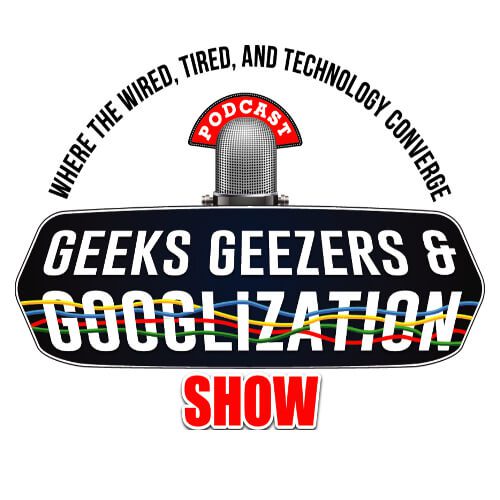[PODCAST] Remembering the Father of Disruptive Innovation
An Interview with Carlos Castelan and Chris HowardFor better or worse, life sometimes reminds us how fragile and valuable each passing moment sincerely is. This past week, we lost 2 amazing people: Kobe Bryant and Clayton Christensen.
Kobe’s life and legacy as one of the best basketball players of all time is cemented in history. Maybe more remarkable is that in just under 4 years from his retirement, he had established himself as an extraordinary community leader and entrepreneur.
The man named Clay was not nearly as famous as Kobe outside the business world but his life and legacy is just as remarkable. His “disruptive innovation” theory has influenced a generation of entrepreneurs, business leaders, and students who have in turn created amazing new opportunities and jobs for millions of people. In 1997, Clay published what The Economist calls one of the six most important business books ever written. “The Innovator’s Dilemma.” Clay clearly understood that disruption would be a consistent, natural force whenever technology was involved.
To understand the impact that Christensen had on both individuals and business, we invited two guests – Carlos Castelan from The Navio Group and Chris Howard from Callahan & Associates. Both studied with Christensen and applied the disruptive innovation principles in their respective businesses, retail and credit unions. Neither guest knew each other prior to the podcast, but both agreed that successful innovation or disruption is not really about innovation or disruption. It’s about understanding the future customer. (You might remember that our guest from a few weeks ago, Charlene Li, author of The Disruption Mindset, also urged us to focus on the future customer if you want to grow and thrive.)
To describe disruption, Castelan suggests we start with Sears and Blockbuster. The disruption in retail is so massive that it’s often referred to as the “retail apocalypse.” Both Sears and Blockbuster dominated their industry segments. Both have disappeared. Their demise was swift. According to Castelan, Sears had revenues of nearly $45 billion and over 320,000 employees as recently as 2010. Ten years later it’s almost history. Blockbuster employed 60,000 people, had 9,000 stories and revenues of nearly $6 billion in 2004. By 2014 it was bankrupt. Why do industry leading incumbent companies like Sears and Blockbuster fail so miserably? Christensen had a theory.
Incumbent companies typically focus on their most profitable and demanding customers. It’s not that they don’t innovate because they do. The problem is that management keeps improving and tweaking what’s worked in the past, blowing off a disruptive technology because customers are asking for it … yet. But when they do, it’s too late for the incumbent. Sears could have easily transformed its paper catalog into digital. Instead it allowed Wal-Mart to cannibalize it’s retail customers and then Amazon disrupted its business model. Blockbuster could have mailed DVDs but instead allowed Netflix to do it. Why disruptive innovation requires that you divert resources and attention from current customers to future customers. It requires focus on long-term survival vs short term gains. The story about Adobe that Charlene Li shared is another excellent example. (I also wrote about Sears, Blockbusters, Radio Shack and other disrupted and now bankrupt companies in my book Recruiting in the Age of Googlization Edition 2.0.
“Sears had revenues of nearly $45 billion and over 320,000 employees as recently as 2010. Ten years later it’s almost history.”
Here’s another. Best Buy, Castelan told us, provides a great example of disruptive innovation. The last thing you might associate with Best Buy is health and wellness. That’s quite a pivot from computers and appliances. But with a growing senior population, who want to stay active in their own homes as long as possible, it’s a market worth disrupting. Connecting these seniors to the healthcare infrastructure requires installing and supporing home health and medical devices to the Internet. Who better to serve this market than Best Buy’s Geek Squad?
Credit unions and disruptive innovation are unlikely bedfellows too.
But the disruptive innovative theory is having a major influence here, says Chris Howard. “Banking is a tough business. It’s very conservative and highly regulated.” It’s even more challenging with credit unions whch are coops. Stakeholders, shareholders, and customers are one and the same. Keeping current customers happy while pivoting toward the future customers seems like a nightmare! Chris explained how his consulting firm helps credit unions get comfortable with change, identity new opportunities and “do well while doing good.”
Both technology and competition threatens customer loyalty and even credit union relevancy. Thinking and acting differently is essential. The credit union solutions is shockingly simple: rethink employee roles. Turn traditional credit union jobs that align with new modernized, strategic goals. A publication I found on Callahan & Associates website reveals how credit unions are responding. Job titles like Vice President of Digital Transformation and Member Insights Manager are examples of thinking differently about the future. (Of course, new job titles don’t transform, but actions do!) Often times, it’s as simple as training credit union employees to serve future customers better by understanding all the available products so the business can grow organically.
Regardless of the industry or history of the business, companies must allow for the development of capabilities they’ll need in the future. Identify your future customer. How might technology disrupt your market? If you know the future will be exactly the same as it was in the past, just keep doing what you’ve always been doing. But if the future will be different — and by all indications it will likely be unrecognizable from today — then it’s the wrong thing to do. Just ask Sears and Blockbuster.
Listen now to hear the rest of my interview with Carlos Castelan and Chris Howard.
Related Resources:
Connect with Carlos Castelan
LinkedIn: https://www.linkedin.com/in/carloscastelan/
Twitter: @cdcastelan
Website: https://thenaviogroup.com
Connect with Chris Howard
LinkedIn: https://www.linkedin.com/company/callahan-&-associates/
Website: https://www.callahan.com/

